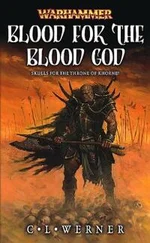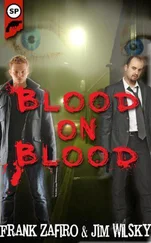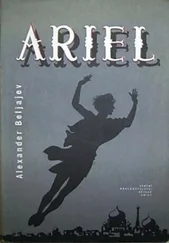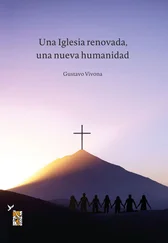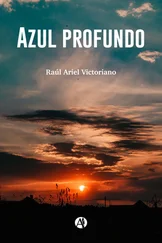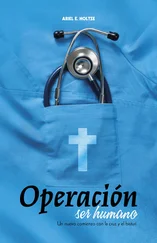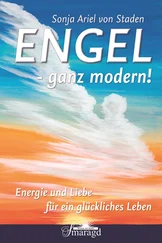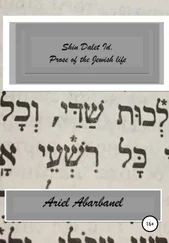Ariel Toaff - Blood Passover
Здесь есть возможность читать онлайн «Ariel Toaff - Blood Passover» весь текст электронной книги совершенно бесплатно (целиком полную версию без сокращений). В некоторых случаях можно слушать аудио, скачать через торрент в формате fb2 и присутствует краткое содержание. Жанр: Религиоведение, на английском языке. Описание произведения, (предисловие) а так же отзывы посетителей доступны на портале библиотеки ЛибКат.
- Название:Blood Passover
- Автор:
- Жанр:
- Год:неизвестен
- ISBN:нет данных
- Рейтинг книги:3 / 5. Голосов: 1
-
Избранное:Добавить в избранное
- Отзывы:
-
Ваша оценка:
- 60
- 1
- 2
- 3
- 4
- 5
Blood Passover: краткое содержание, описание и аннотация
Предлагаем к чтению аннотацию, описание, краткое содержание или предисловие (зависит от того, что написал сам автор книги «Blood Passover»). Если вы не нашли необходимую информацию о книге — напишите в комментариях, мы постараемся отыскать её.
Blood Passover — читать онлайн бесплатно полную книгу (весь текст) целиком
Ниже представлен текст книги, разбитый по страницам. Система сохранения места последней прочитанной страницы, позволяет с удобством читать онлайн бесплатно книгу «Blood Passover», без необходимости каждый раз заново искать на чём Вы остановились. Поставьте закладку, и сможете в любой момент перейти на страницу, на которой закончили чтение.
Интервал:
Закладка:
We believe that consideration should be given to the possibility that Salmone may have also undertaken another artistic-literary undertaking of great importance, at proportional economic cost. The precious miniatures of the so-called "Rothschild Miscellanea", one of the most sumptuous and famous of all Jewish legal codes, were executed in the decade between 1470 and 1480, probably in Leonardo Bellini’s workshop at Venice. The artistic decoration of the manuscript cost almost one thousand ducats, a sum equivalent to half the taxes paid by the entire Jewish community of the Duchy of Milan during the same period [64] The hypothesis, sustained by Nissim ( Famiglie Rapa e Rapaport nell'Italia settentrionale , sec. XV-XVI. Con un' appendice sull'origine della Miscellanea Rothschild , in A. Piattelli and M. Silvera, Minhat Yehuda . Saggi sull'ebraismo italiano in memoria di Yehuda NelloPavoncello , Rome, 2001, pp. 190-192), is based on the studies of U. Bauer-Eberhardt ( Die Rotschild Miscellanea in Jerusalem: Hauptwerke des Leonardo Bellini , in "Pantheon", XLII, 1984, pp. 229-237), expressing the opinion that the miniatures in Miscellanea Rotschild, currently preserved at the Israel Museum of Jerusalem, were probably executed at Venice in Leonardo Bellini's workshop, and perhaps by the same master. But see L. Mortara Ottolenghi, The Rotschild Miscellany MS 180/51 of the Israel Musem in Jerusalem. Jewish Patrons and Christian Artists , in "Hebrew Studies", British Library Occasional Papers, 13, London, 1991, pp. 149-161. In contrast to Bauer-Eberhardt and Nissim, the illustrious Canadian scholar attributes the miniatures to the schools of two major Christian artists of Cremona, Bonifacio Bembo and Cristoforo de Predis (circa 1460-1480), identifying the client as the Jew Furlano da Cremona, i.e., the banker Mose di Consiglio Sacerdoti.According to Nissim, who believes that he has succeeded in identifying the client as Salomone di Marcuccio da Piove, a resident of Venice; the reason why the latter's name does not appear in the manuscript, where the name of the rabbi Moshè b. Jekutiel Coen Rapa, his protégé, does appear, could be explained by Salomone's sudden and mysterious death, occurring in 1475, when the code was not yet completed (written communication from D. Nissim dated 11 November 2004).
. Salomone may well have been the only Jewish sponsor living more or less permanently in the city of the lagoons able to make
p. 31]
an investment of such magnitude without difficulty. For purposes of comparison, we know that in 1473, Salomone, still active on the piazza of Venice, together with one of his sons, Marcuccio, his first born, was able to pay a gigantic sum, equal to 300 ducats in cash and another 360 in credits, intended for the restoration of the perimeter wall of the old Arsenal [65] Cfr. Segre, Cristiani novelli e medici ebrei a Venezia , cit., pp. 388-389.
.
Between 1468 and 1469, in view of Emperor Friedrich’s forthcoming visit to Venice, Salomone hosted a plenary meeting at Piove of the German rabbis of the Jewish community of northern Italy, presided over by their most authoritative exponent, the jurist Yoseph Colon, then active in the community of Mestre [66] Cfr. Carpi, L’individuo e la collettività , pp. 44-45.
. The petitions said to have been presented by the Jewish ambassadorship to the solemn and magnificent Emperor during the anticipated audience described by Rabbi Elia Capsali di Candia in his chronicles may have been drawn up on that occasion.
During the summer of 1470, David Mavrogonato set sail from Venice to return to Candia for what was to be his last mission. He had long since prudently avoided reappearing on his native island. He was probably accompanied on this voyage by Salomone di Piove himself, who, at the end of June, left his son Salamoncino with a power of attorney for the purpose of collecting a huge loan from the bank Soranzo at Venice, a transaction which he would normally have conducted directly [67] Cfr. Ibidem, p. 39. It is important to note that on 25 March 1470, a few months before David Mavrogonato's last voyage, the Serenissima charged Salomone da Piove with effecting, for his account, a loan of 100 ducats to Mavrogonato ("David hebreo de Candia"). The money was to be used by the Candian government to pay the captain of the galleys of Alexandria (ASV, Collegio, Notatorio, reg. 11, 68r). Venice's intention was therefore that Mavrogonato should reach Candia, a location to which he never returned -- probably for good reason -- after the first mission.
. As we know, this was a voyage from which Mavrogonato is thought never to have returned alive, meeting with his tragic demise a few weeks later, certainly before September of that year. From that time onwards, Mavrogonato’s name and memory were to be systematically omitted from all documents signed by his former associate, Salomone da Piove, as well as by Salamone’s sons, although reference to the privileges obtained by the influential merchant from Candia appears to have become an established custom. This is not surprising and cannot be merely accidental. Salomone certainly knew the truth about that last voyage to Constantinople in which Mavrogonato is believed to have met with unexpected death. Did Salamone know too much? Did he wish to forget, or rather, cause others to forget, that he had been with him on that tragic maritime voyage? What is certain is that Salomone da Piove was close to David Mavrogonato until the end. Perhaps too close.
It is not therefore surprising to learn that, at around this same time, Salomone personally took over a bold project, perhaps planned beforehand by his associate and collaborator from Candia,
p. 32]
"to take the life of the Great Turk", thus doing the government of Venice a great favor [68] Salomone da Piove's plan emerges clearly from a petition sent by his son Salamoncino to the Consiglio dei Dieci of Venice dated 9 July 1477. On the Venetian conspiracy against Maometo II, see, F. Babinger, Ja'acub-Pascha, ein Leibartzt Mehmeds II, Leben und Schicksale des Maestro Jacopo aus Gaeta , in "Rivista delgi Studi Orientali", XXVI (1951), pp. 87-113.
. To provide for the assassination of Mahomet II, the nonchalant financier informed the Council of Ten that he had sent a Jewish doctor named Valco, whose Italian name was probably derived from the well-known family of doctors, natives of Worms, called Wallach, Wallich or Welbush, to Constantinople, at his expense [69] The famous family of Wallach di Worms, the members of which were, by medical tradition, has left us numerous numerous testimonies, which are particularly far-reaching starting with the early Cinquecento. Cfr. Jewish Encyclopedia , New York-London, 1901-1906, s.v. Wallich (Wlk). The name Valk, Volk, Valke for Falco, Falcone is attested to in the Middle Ages among the Jews of Cologne, Nuremberg and Frankfurt (cfr. A. Beider, A Dictionary of Ashkenazic Given Names , Bergenfield, N.J., 2001, p. 306).
.
"Salamon, as appears in the books of Your Majesties the Council of Ten, due to his wish to do a great ourselves and all of Christianity a great service by attempting to take the life of the Great Turk, chose, at his expense, sent for a Maestro Valco, a Jewish doctor, whom he sent with his own money" [70] Cfr. Babinger, Ja'aqub-Pascha , cit., pp. 106-107.
.
Even before that, we know that the Venetian authorities had been glad to avail themselves of the services of a Jewish barber-surgeon, Jacob da Gaeta, the Sultan’s personal physician, an expert spy and double agent, greedy for gain and treacherous, with whom Mavrogonato had maintained frequent contacts [71] Cfr. ibidem, pp. 90-106; B. Lewis, The Privilege Granted by Mehmed II to his Physician , in "Bulletin of the School of Oriental and African Studies", XIV (1952), pp. 550-563.
. It also appears that Maestro Jacob had reached Venice in secrecy, together with Gaeta, on the same vessel from Ragusa, in very late 1468, on the eve of the imperial visit and the Venetian congress of Jewish physicians, held on that occasion [72] Cfr. Jacoby, Un agent juif , cit., pp. 76-77.
.
Интервал:
Закладка:
Похожие книги на «Blood Passover»
Представляем Вашему вниманию похожие книги на «Blood Passover» списком для выбора. Мы отобрали схожую по названию и смыслу литературу в надежде предоставить читателям больше вариантов отыскать новые, интересные, ещё непрочитанные произведения.
Обсуждение, отзывы о книге «Blood Passover» и просто собственные мнения читателей. Оставьте ваши комментарии, напишите, что Вы думаете о произведении, его смысле или главных героях. Укажите что конкретно понравилось, а что нет, и почему Вы так считаете.

